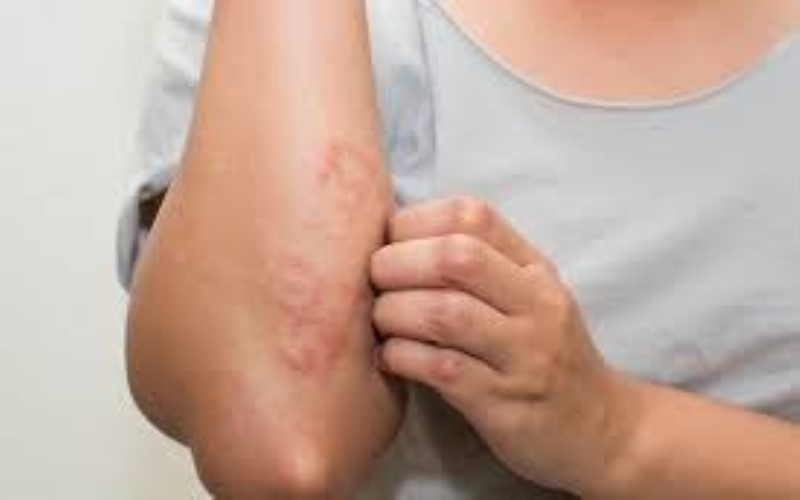The skin, the largest organ in the human body, is susceptible to numerous conditions due to its exposure to a variety of environmental factors. Dermatologists help patients manage both common and uncommon conditions by specializing in the diagnosis and treatment of skin-related conditions. The top ten skin conditions that dermatologists treat and the best ways to treat them are listed below. Skin doctor Trichy
Acne
Although it can affect people of any age, acne is one of the most common skin conditions, particularly among adolescents. Cysts, blackheads, whiteheads, and pimples are some of its defining features. Acne occurs when oil and dead skin cells clog hair follicles.
Management: Topical Treatments: For mild cases, over-the-counter products containing salicylic acid or benzoyl peroxide can be helpful. Oral medications: For moderate to severe acne, dermatologists may recommend hormonal treatments or antibiotics. Professional Treatments: For persistent cases, chemical peels, laser therapy, and drainage of large cysts are options.
Atopic dermatitis, or eczema
Eczema is a long-term condition that makes the skin itchy, red, and inflamed. It usually shows up in early childhood but can show up in adulthood as well. Although the exact cause is unknown, it is thought to involve environmental and genetic factors.
Management: Emollients can help maintain the skin’s moisture barrier by being applied frequently. Topical steroids are used to control flare-ups and reduce inflammation. Avoid Triggers: It is essential to identify and avoid irritants like certain fabrics, soaps, and stress.
Psoriasis
Psoriasis is an autoimmune condition that causes thick, scaly patches of skin by rapidly shedding skin cells. It can be linked to other health problems, such as psoriatic arthritis, and is a chronic condition with periods of remission and flare-ups.
Management: Topical Treatments: Vitamin D analogs and steroid creams are frequently prescribed. Phototherapy: Skin cell production may be slowed down by ultraviolet light. Systemic Treatments: For severe cases, oral or injectable medications like biologics are used.
Rosacea
Rosacea is a persistent skin condition that manifests itself on the face as redness, swelling, and visible blood vessels. Additionally, it may result in acne-like pimples. Although the exact cause is unknown, it may be related to environmental and genetic factors.
Management: To treat redness and inflammation, topical treatments like azelaic acid and metronidazole are frequently prescribed. Oral antibiotics: Tetracyclines are frequently used to treat cases that are more severe. Laser Therapy: Vascular lasers can aid in the reduction of redness and visible blood vessels.
Skin Cancer
Melanoma is the most serious form of skin cancer, making it one of the most common types. Excessive exposure to ultraviolet (UV) light from the sun or tanning beds is frequently the cause of this condition.
Management: Early detection requires regular skin examinations and prompt biopsy of suspicious lesions. Surgical Removal: Depending on the type and stage of the cancer, excision, Mohs surgery, or cryotherapy may be used. Preventive measures include using sunscreen, protecting oneself with protective gear, and avoiding tanning beds.
Uritis (hives)
Hives are welts that are red and itchy and can be caused by an allergic reaction or other factors like stress, infections, or certain medications. They can show up suddenly and last for hours or even days.
Management: Prescription or over-the-counter antihistamines can help reduce swelling and itching. Avoid Triggers: It is essential to identify and avoid known triggers. Cool Compresses: Cool compresses can help alleviate pain in the affected areas.
Warts
The benign growths known as warts are brought on by the HPV virus. They can spread through direct contact and can appear on a variety of body parts. Management: Warts can be treated topically with salicylic acid or cryotherapy. Laser Therapy: Pulsed dye laser therapy can target the wart’s blood vessels. Surgical Removal: Dermatologists may perform minor surgery to remove stubborn warts.
Dermatitis Seborrhoeicus
Seborrheic dermatitis is a common inflammatory condition that causes oily areas like the scalp and inside of the ears to develop flaky, white to yellowish scales. It can be persistent and is frequently accompanied by dandruff.
Management: Shampoos with Medicated Ingredients: Shampoos with zinc pyrithione, selenium sulfide, or ketoconazole can help control flaking. Topical Steroids: Steroids with a low strength can lessen inflammation. Creams with antifungal properties can reduce the yeast that causes the condition.
Vitiligo
Skin pigment cells (melanocytes) are lost in vitiligo, resulting in white patches on various parts of the body. It is thought to be an autoimmune disorder. Management: Corticosteroids and calcineurin inhibitors can be applied topically to restore some pigment. Phototherapy: Narrowband UVB light therapy can increase the production of melanocytes. Camouflage: Products for applying makeup or self-tanning can help even out skin tone.
Dermatitis contactiosa
When the skin comes into contact with an allergen or irritant, contact dermatitis can cause redness, itching, and blistering. Chemicals, odors, and certain plants like poison ivy are all common irritants.
Management: The first step is to identify and avoid the substance that is causing the problem. Steroids applied topically can soothe the skin and reduce inflammation. Moisturizers: Maintaining skin’s hydration can aid in barrier function repair.
Conclusion
Skin conditions frequently necessitate a combination of lifestyle changes and medical treatment. For these conditions to be accurately diagnosed and effectively treated, regular visits to a dermatologist are necessary. Patients’ Skin doctor Trichy outcomes and quality of life can be significantly improved with early intervention and treatment plan adherence.

